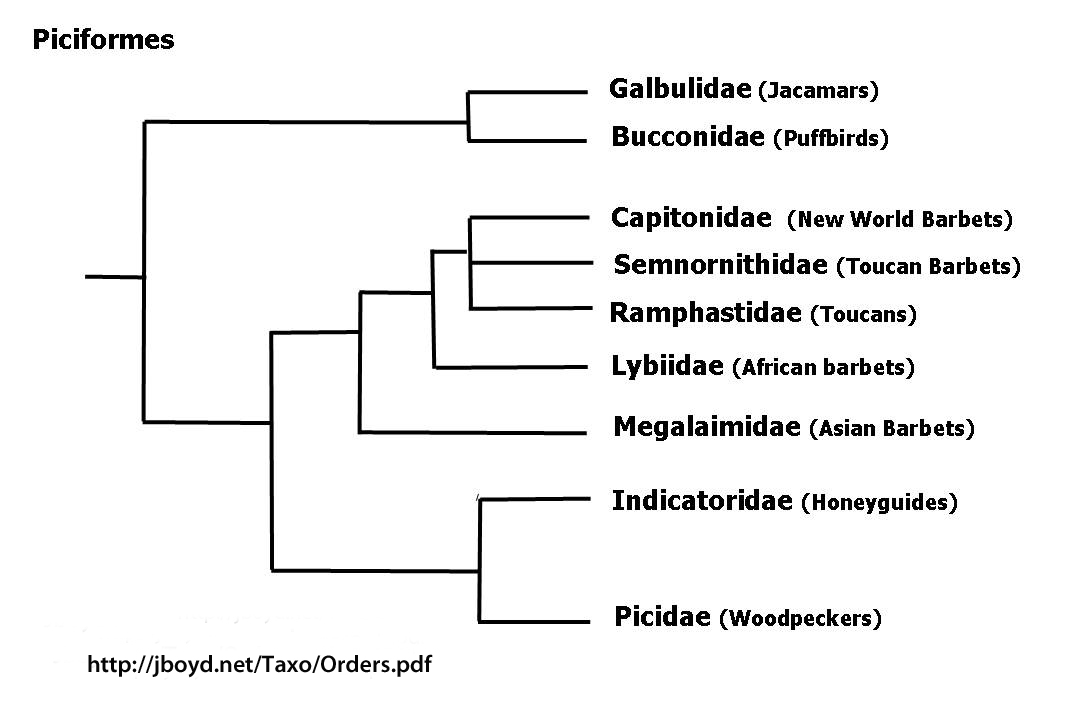Piciformes
Classification The finding that Piciformes were lying inside the "old" Coraciiforme order indicated that the latter was not monophyletic. Monophyly was restored by recognizing Bucerotiformes, Piciformes and the remaining Coraciiformes as separate orders.

Nine families of largely arboreal birds make up the order Piciformes, the best-known of them being the Picidae (woodpeckers and relatives), which are about one half of the more than 400 species.
Puffbirds (Bucconidae) and Jacamars (Galbulidae), which had been considered separate orders are now included in the Piciformes.
In general, the Piciformes are insectivorous, although the toucans (Ramphastidae) and the barbets Capitonidae (New World barbets), Semnornithidae (Toucan barbets), Lybiidae (African barbets), and the Megalaimidae (Asian barbets, not shown here) mostly eat fruit. The honeyguides, not shown, (Indicatoridae) are unique among birds in being able to digest beeswax (still, insects make up the bulk of their diet).
Nearly all Piciformes have parrot-like zygodactyl feet (two toes forward and two back), an arrangement that has obvious advantages for birds that spend much of their time on tree trunks. An exception are a few species of three-toed woodpeckers. The jacamars aside, Piciformes do not have down feathers at any age, only true feathers. All nest in cavities and have altricial young.
Hackett SJ et al (2008): Phylogenomic Study of Birds
http://en.wikipedia.org/wiki/Piciformes